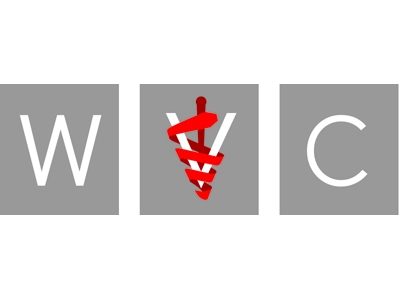TEN TIPS TO EXTEND YOUR INFUSION PUMP'S LIFE
Infusion pumps are an essential part of hospitals, physician offices, outpatient surgery centers, emergency service vehicles and veterinary clinics. But what happens when they break down or just stop performing in peak condition after years of wear and tear?
Despite new models coming out each year from various manufacturers, your infusion pumps were built to provide years of safe and efficient operation. Here are AIV’s top tips for extending the life of your IV Pump:

Tip 1: Replace the Batteries Regularly
Sometimes, pump failure could simply be due to old batteries in your unit. The rechargeable batteries found in your pump hold a charge less effectively over time. Regular replacement of these batteries will lessen the chances of false error codes and inadvertent pump shutdown.
Second-source medical battery suppliers can also be just as effective as the old OEM battery, provided that the replacement battery is rated and constructed for use in specific IV pump models.

Tip 2: Update Your Pump Software
Sometimes, OEMs can provide software upgrades for infusion pumps so make sure you stay up-to-date with the latest software releases!

Tip 3: Replace the Infusion Pump Casing and Exterior
Replacing the exterior parts of the IV pump not only protects against fluid invasion and other issues, it also visually presents the pump positively to the patients it is used on.

Tip 4: Repair/Restore Broken Pumps
A malfunctioning pump does not necessarily mean it must be discarded. Many failures happen to parts that can be easily accessed and replaced, significantly lowering the department's overhead costs. There are many repair options available:
a. Diagnose and Repair In-House
Before anything else, try consulting your in-house professionals. You not only save time but money as well when you reach out to your resident technician versus outsourcing advice from a third-party service.
b. Send to Original Equipment Manufacturer (OEM) for Servicing
OEM companies can provide full service for their infusion pumps and can repair pumps to the same standard and specification your infusion pump device had when it was originally purchased. This is by far the most expensive option for you to consider.
c. Outsource Repairs and/or Services to A Third Party
Alternatively, you can also have your IV pump serviced by a third-party vendor like AIV that you trust and maintain a strong relationship with. AIV’s technicians and staff can be very helpful with emergency repairs, loaner pumps, and other services. AIV provides a 120-day warranty on all new replacement parts, a 60-day warranty on recertified parts, and pump repairs with a 6-month warranty.
All AIV repairs are performed in their ISO 13485:2016 certified facility to strict quality standards. We offer both flat rate, all-inclusive pump repairs as well as fixed-rate labor repairs to better suit your budgeting needs. For the full list of infusion pump repair services that AIV currently offers, click here.

Tip 5: Incorporate All OEM Safety & Service Upgrades in A Timely Manner
Be mindful of OEM service bulletins and upgrades. They are an excellent way to extend the life of your pumps. Not only do they keep your system up-to-date, but they also help prevent the chances of dosage errors.
Enjoying these tips so far? You can access these 10 tips anywhere, anytime, by downloading the PDF guide.

Tip 6: Attend to Warnings and Nuisance Alarms Promptly
Attending to pump warnings and alarms immediately will keep your infusion device well-calibrated and in good working condition. The most common parts that may require recalibration or replacement often include the cases, keypads and doors.
Most internal components of an infusion pump can be replaced, giving you a budget-friendlier alternative to purchasing brand new equipment.

Tip 7: Perform Regular Service (PMs)
Regular pump service can proactively identify and mediate issues that may cause the pump to malfunction. Infusion Pump Preventive Maintenance covers inspection for physical damage, battery level, and power cords. It also includes calibration procedures.

Tip 8: Maintain and Clean Power Cords
Not only can faulty wiring cause damage to the pump itself, but it can also make it unsafe for clinical staff and patients to use. Ensure all electrical cords are clean and damage-free through regular cleaning and maintenance. Early detection of cable issues may enable the repair instead of replacement of the part. Once faults are discovered however, be sure to replace them immediately. New power cords can easily be purchased from providers like AIV.

Tip 9: Undertake Additional Infusion Pump Training
Regular education on pump function and common problems will enable your facility to diagnose and correct common pump problems. Many biomedical conferences, such as the CMIA or AAMI annual conferences, offer these seminars free of charge to biomedical professionals.

Tip 10: Purchasing Additional Models of Equipment Required
Purchasing several models of the same pump can be a good insurance policy for your institution. Quantity discounts are available from some distributors, and the extra pumps can be used as substitute floor units, or for replacement parts.
Replacing your current machines with all-new equipment doesn’t have to be the only solution! By following these top ten tips, you can add several more years of safe usage to any of your infusion pump devices and earn additional savings for your facility.
For reliable, quality-driven infusion pump replacement parts and services, call on AIV. AIV manufactures and recertifies an extensive range of power cords, keypads, cases, doors, and other high quality parts that have been designed to strict quality standards in our US based ISO 13485:2016 certified facility. In addition, all pump maintenance and repairs are performed by AIV’s trained and experienced technicians. This is why AIV’s pump replacement parts and infusion pump repairs are trusted by hospitals worldwide.
Are you looking to extend the life of your infusion pump, and want to have these tips easily accessible? Download these 10 tips in a PDF guide now!
ABOUT THE AUTHOR

Laura Collier
Laura Collier has a Bachelor’s Degree in Communications and a Master’s Degree in Business Administration from the University of North Florida. She is the Marketing Manager at AIV, Inc.
FOUNDING PARTNER OF

VET SHOWS WE ATTEND




TESTIMONIALS
"I also wanted to heap praise on your repair techs. It's nice to get repairs that stay repaired after 6 months. I have stuff that was repaired 3 years ago that has never given me problems again. Other places just seem to patch it together and then it breaks again as soon as the warranty is up. Between horses enjoying knocking over IV poles, and dogs who enjoy chewing on things, our equipment is sometimes in pretty bad shape. Your techs take the time to check and fix all of the parts that might be damaged from this type of treatment, and I and the animals here appreciate it."
Tell Bailey
Colorado State University Veterinary School
"My technicians really like your fluid warmer and feel that it keeps the patients a few degrees warmer versus not using it. After we trialed it they were begging for more fluid warmers so it must work."
Dr. Dan Degner
Animal Surgery Center of Michigan